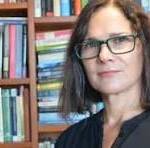Dr. Mahim Mendis, in Daily FT, 26 April 2024 …. where the title runs thus: “Revivial of Premadasism the Way Forward for Sri Lanka,”
…in DailyFT, 26 April  Truly cultured men and women have the capacity to be thankful for the progressive measures taken by Ranasinghe Premadasa. He was a true embodiment of Social Democracy, governing the entire social, political, cultural, and moral order. He was not a mere propagator of a Social Market Economy, when he took over leadership from a right wing, J.R. Jayewardene led UNP that tried to dislodge Deputy Leader Premadasa from his well-earned Presidential candidature in 1989. The same right-wing forces in the UNP, tried to impeach him together with Feudalist sympathisers, who lost all their social status due to Premadasaism
Truly cultured men and women have the capacity to be thankful for the progressive measures taken by Ranasinghe Premadasa. He was a true embodiment of Social Democracy, governing the entire social, political, cultural, and moral order. He was not a mere propagator of a Social Market Economy, when he took over leadership from a right wing, J.R. Jayewardene led UNP that tried to dislodge Deputy Leader Premadasa from his well-earned Presidential candidature in 1989. The same right-wing forces in the UNP, tried to impeach him together with Feudalist sympathisers, who lost all their social status due to Premadasaism











